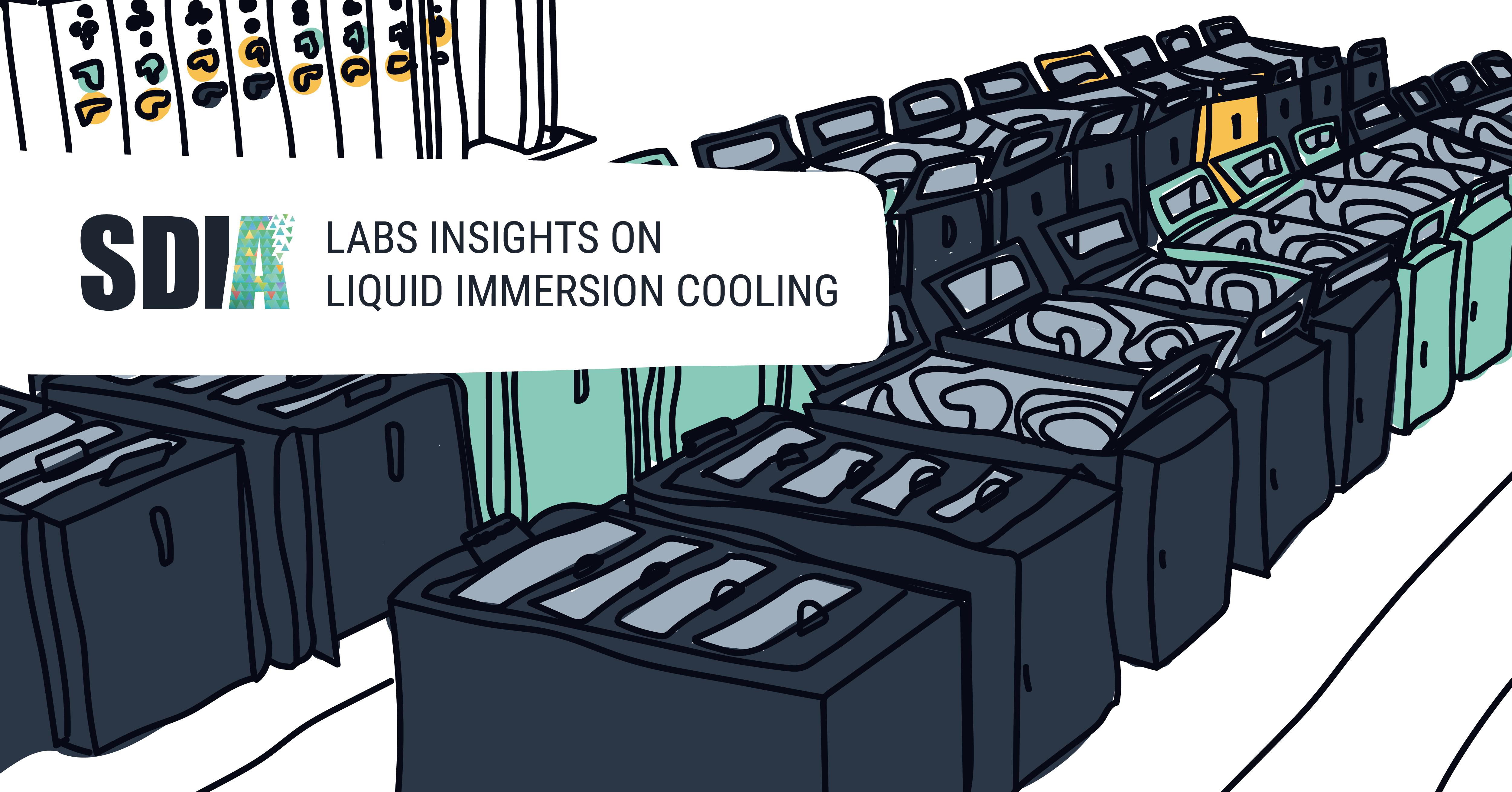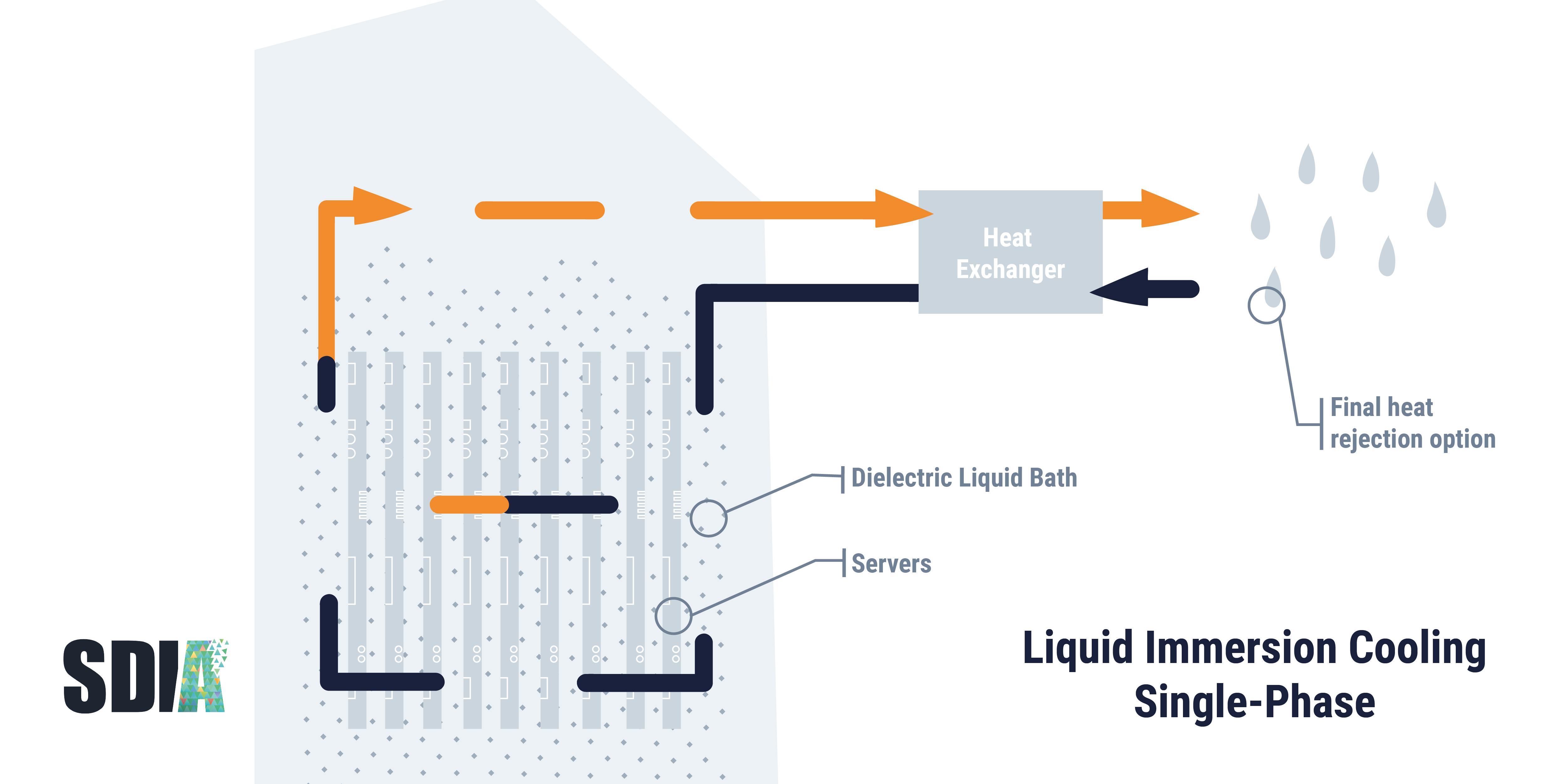Liquid cooling solutions have emerged as an innovative and sustainable way for digital infrastructure providers to reduce their energy and resource use, alongside other sustainability benefits. Our Excess Heat Utilization from Data Centers Steering Group is running and we plan to launch a new one on the Liquid Immersion Cooling, led by members such as Asperitas and Submer. This article is authored by Razi Ahmadi from our Innovation Labs team — as part of our series highlighting the work of our Steering Groups.
Key Takeaways
- Data centers are rapidly growing and consequently, energy consumption is increasing
- Cooling systems are responsible for circa 40% of the energy consumption within data centers
- Traditional cooling systems like air-cooling, despite their benefits, are not practical for the future
- Liquid cooling systems, due to their higher heat transfer capacity, will be a more feasible alternative
- Liquid immersion cooling (LIC) solutions submerge computing elements into dielectric fluids
- LIC increases the rate of heat transfer, reducing the energy consumption and carbon footprint
- Dielectric liquids applied in LIC are categorized as single-phase and two-phase, and have particular applications based on their properties
- Liquid immersion cooling is an efficient and sustainable cooling approach that provides new opportunities to utilize excess heat
Around the world, the significant demand for 5G connectivity, cloud-based gaming, the Internet of things (IoT), and other technological developments are fueling rapid growth within the information and communications technology (ICT) infrastructure. This development, in turn, is leading to greater energy consumption within data centers (DCs), while also incentivizing the computing industry to improve the processing efficiency of their devices and other products. Research demonstrates that an average of 40% of a DC’s entire energy consumption is directly consumed by the cooling system. This fact poses a sobering wake-up call for DC operators to further enhance current cooling systems, capitalize on new technologies, and develop new approaches to DC cooling. At the moment, most cooling systems are based on air cooling, popularized by its general ubiquity and key benefits such as cost and operational conditions. A survey by the Uptime institute revealed that approximately 56% of the DCs are using precision air cooling while 30% are using basic room-level cooling and only 14% are utilizing liquid cooling systems.
Limitations and alternatives for air-cooling
Despite their popularity, however, air-cooled systems have constraints that limit the ability of such systems to reach higher efficiency in DCs. Such limitations include the lack of an intelligent and practical heat removal system from IT devices and managing airflow inside the DCs, in addition to the low heat capacity. Since the main role of cooling devices is to keep the temperature within the desired range of operation to prevent malfunctioning and hot spots on the computing components, it is beneficial to consider the main features of liquid cooling as a practical alternative. Liquid cooling systems provide significant benefits over air-cooled systems, including larger heat transfer capacity (for instance the specific heat capacity of water within the room temperature is 4184 Jkg-1K-1 whilst air is 1012 Jkg-1K-1). This makes liquid cooling much more efficient and appealing for large-scale DCs, not only to accelerate the heat removal from the hot components, but also to reduce energy consumption, costs, and noise.





.jpg?ixlib=gatsbyFP&auto=compress%2Cformat&fit=max&rect=0%2C44%2C600%2C800&w=600&h=800)
